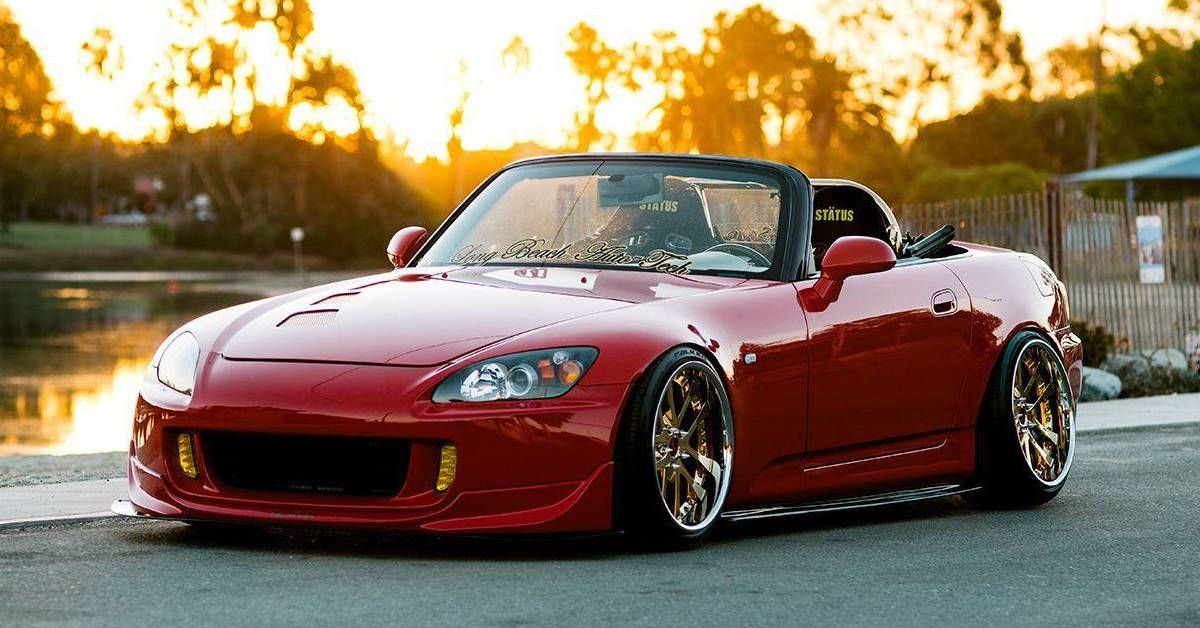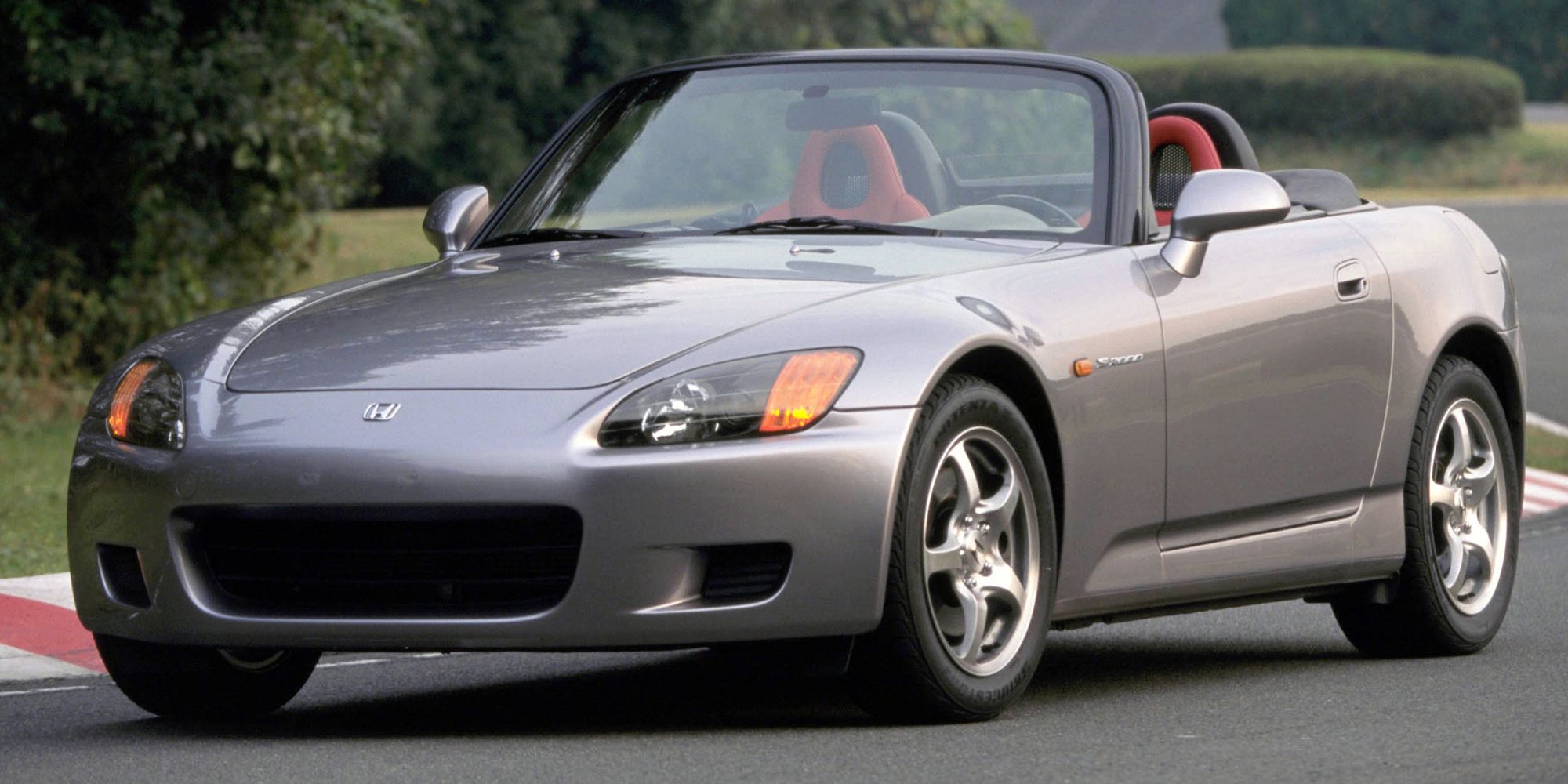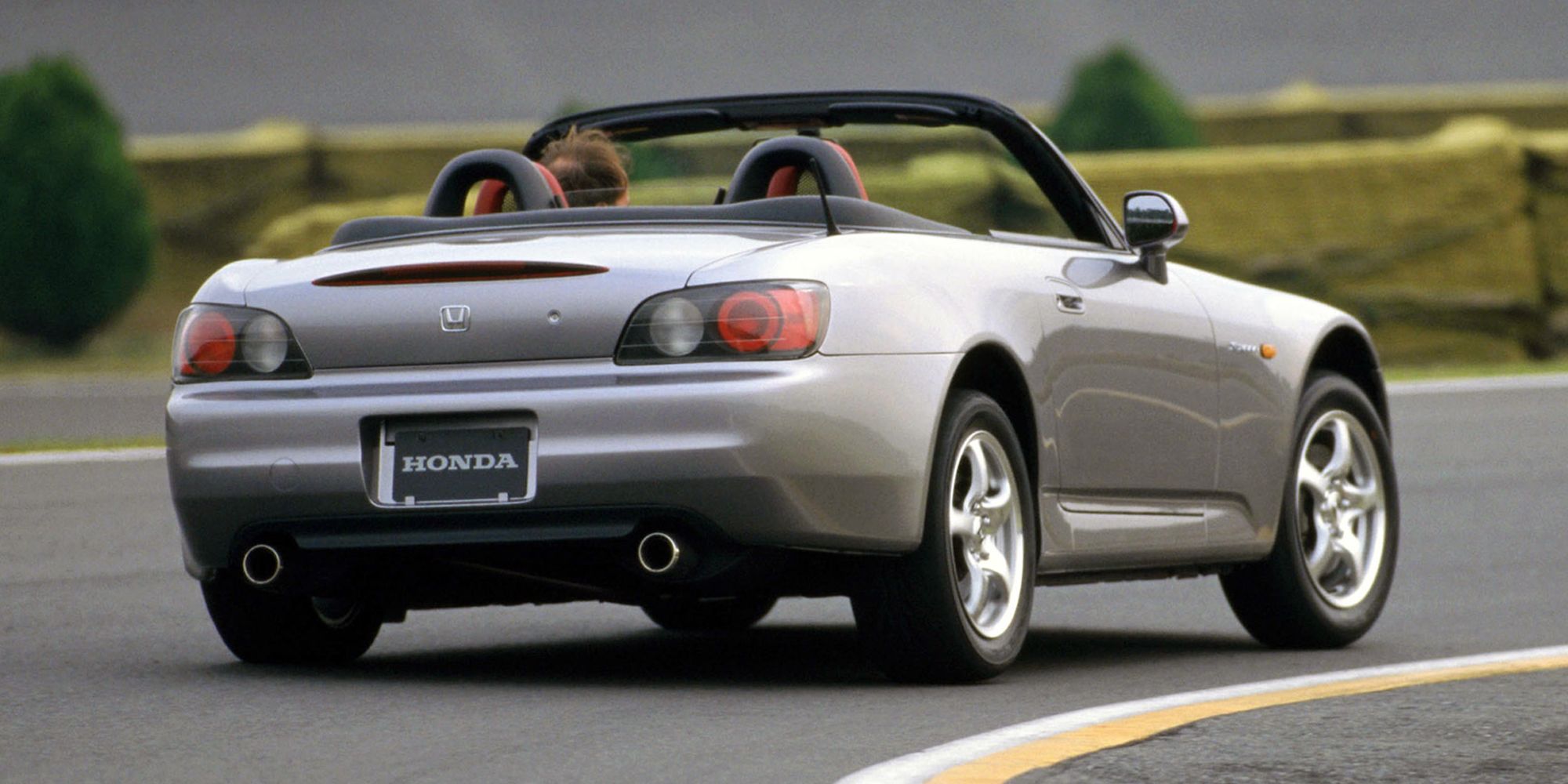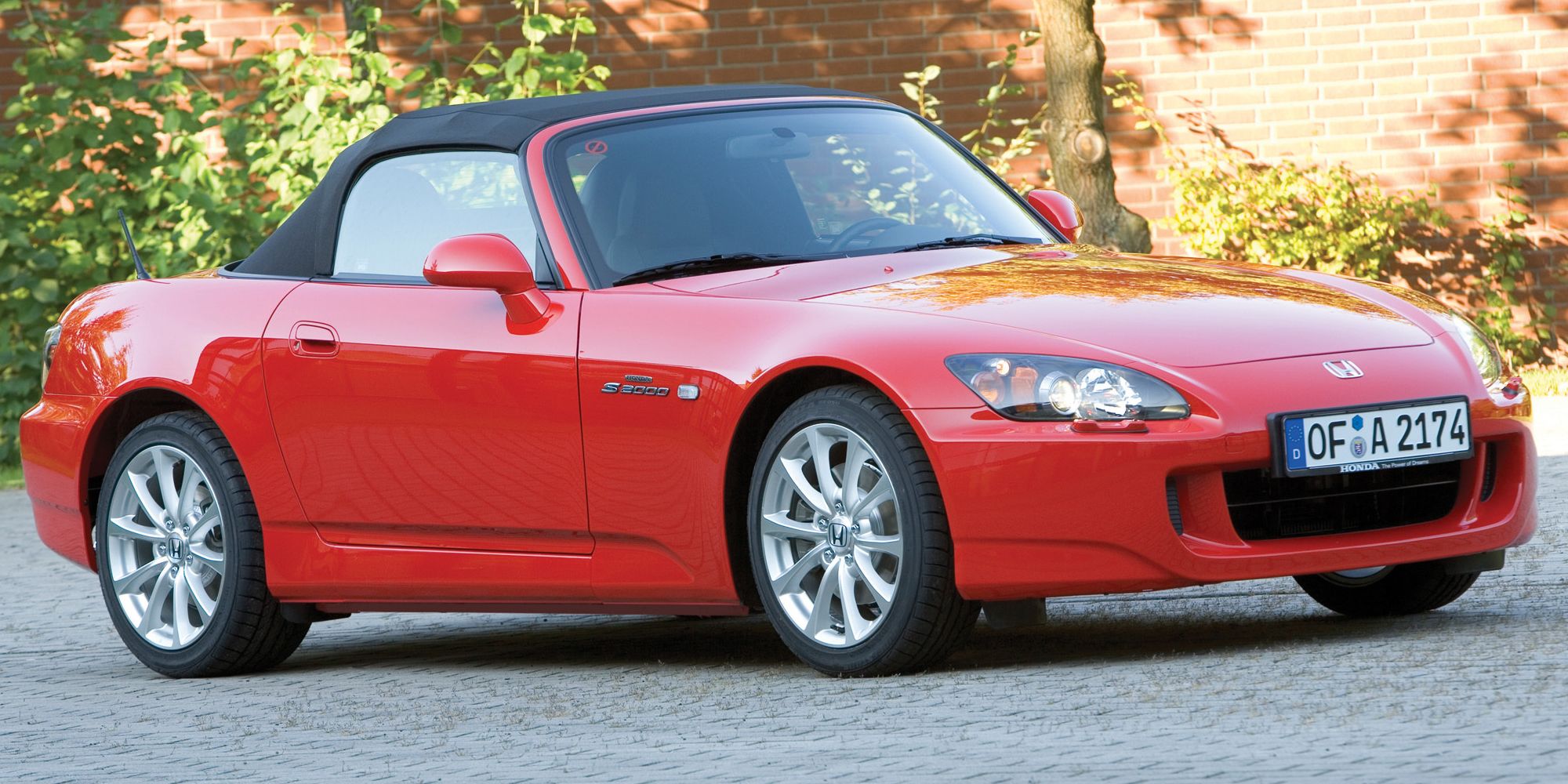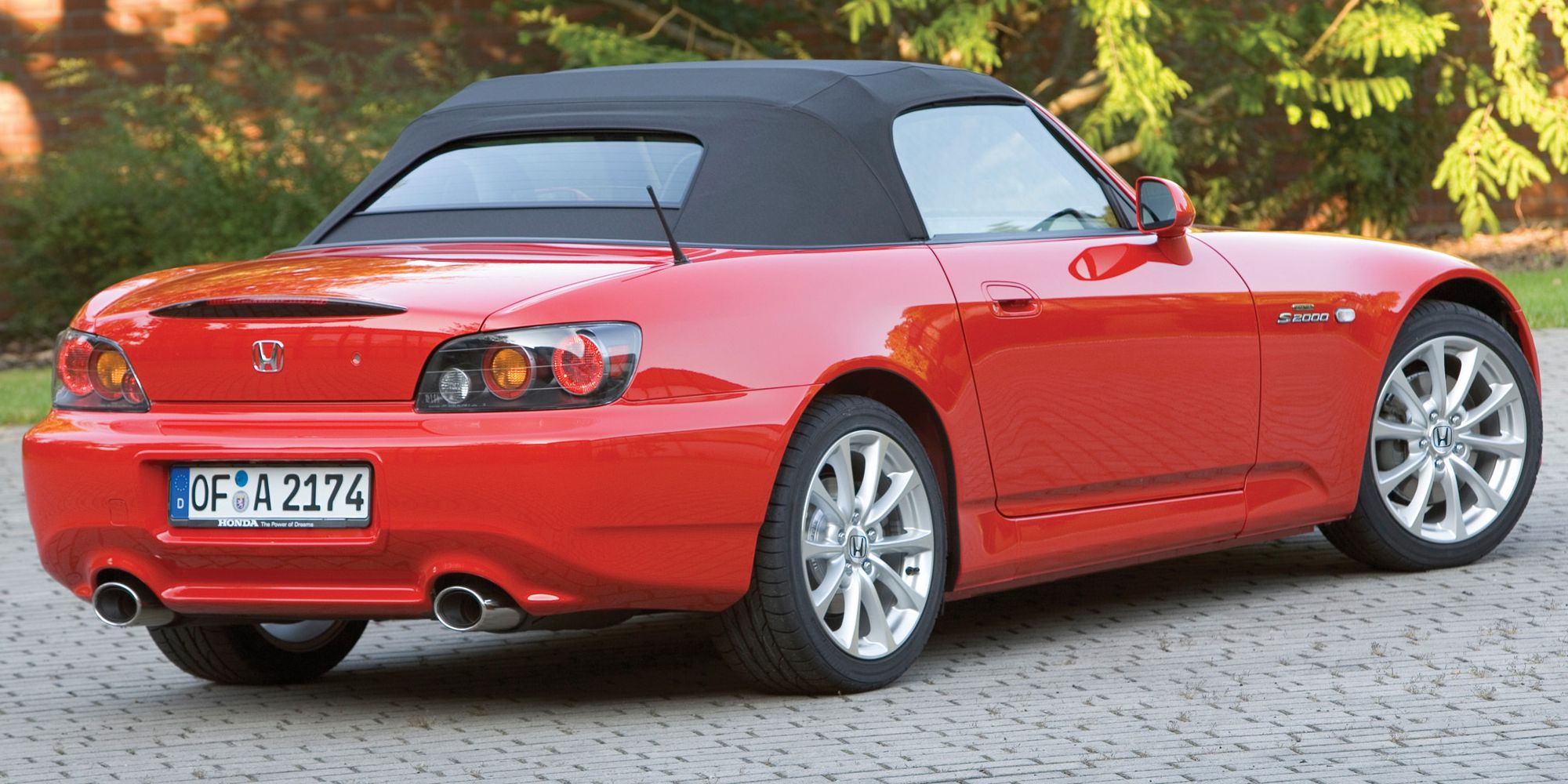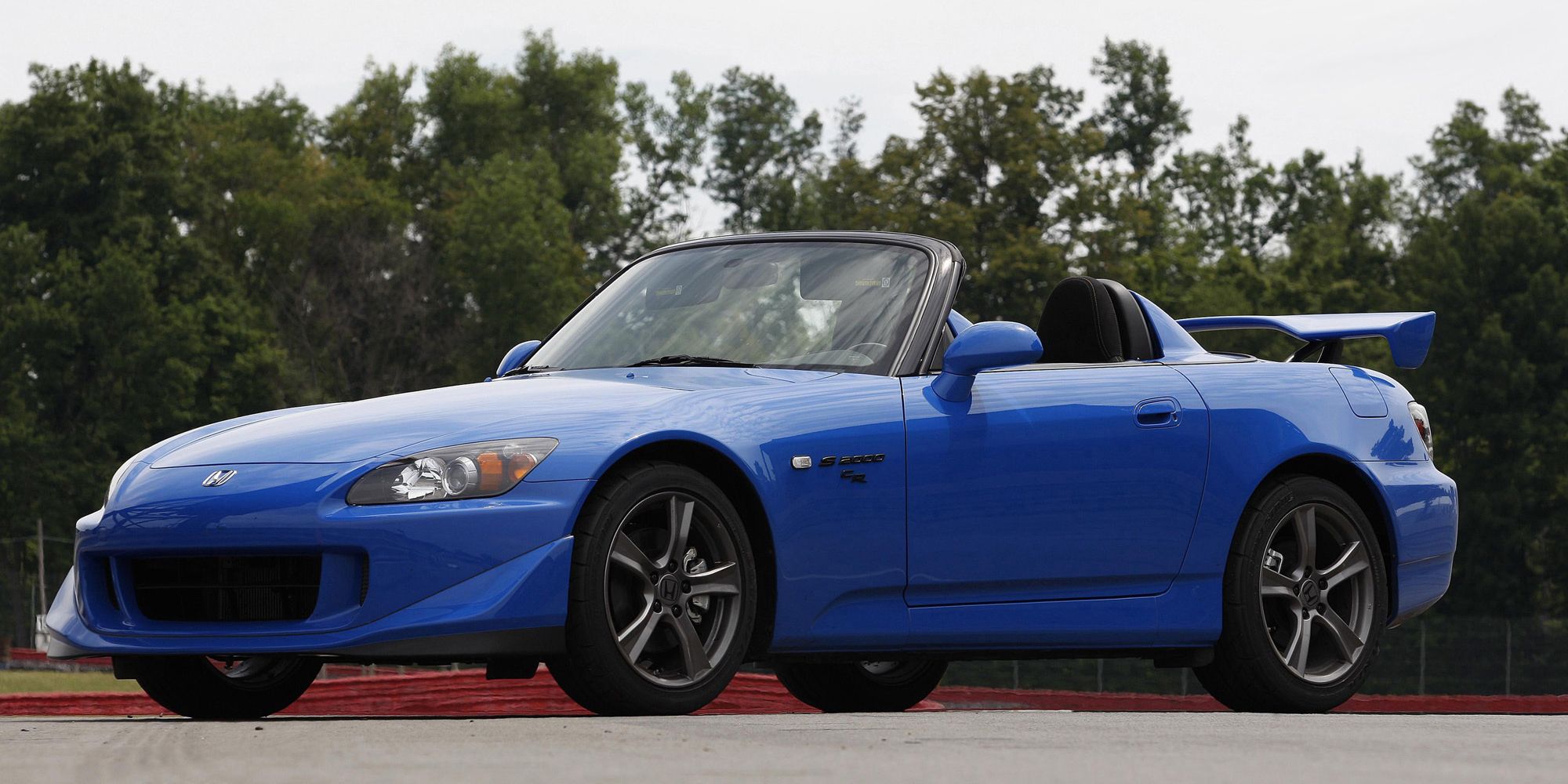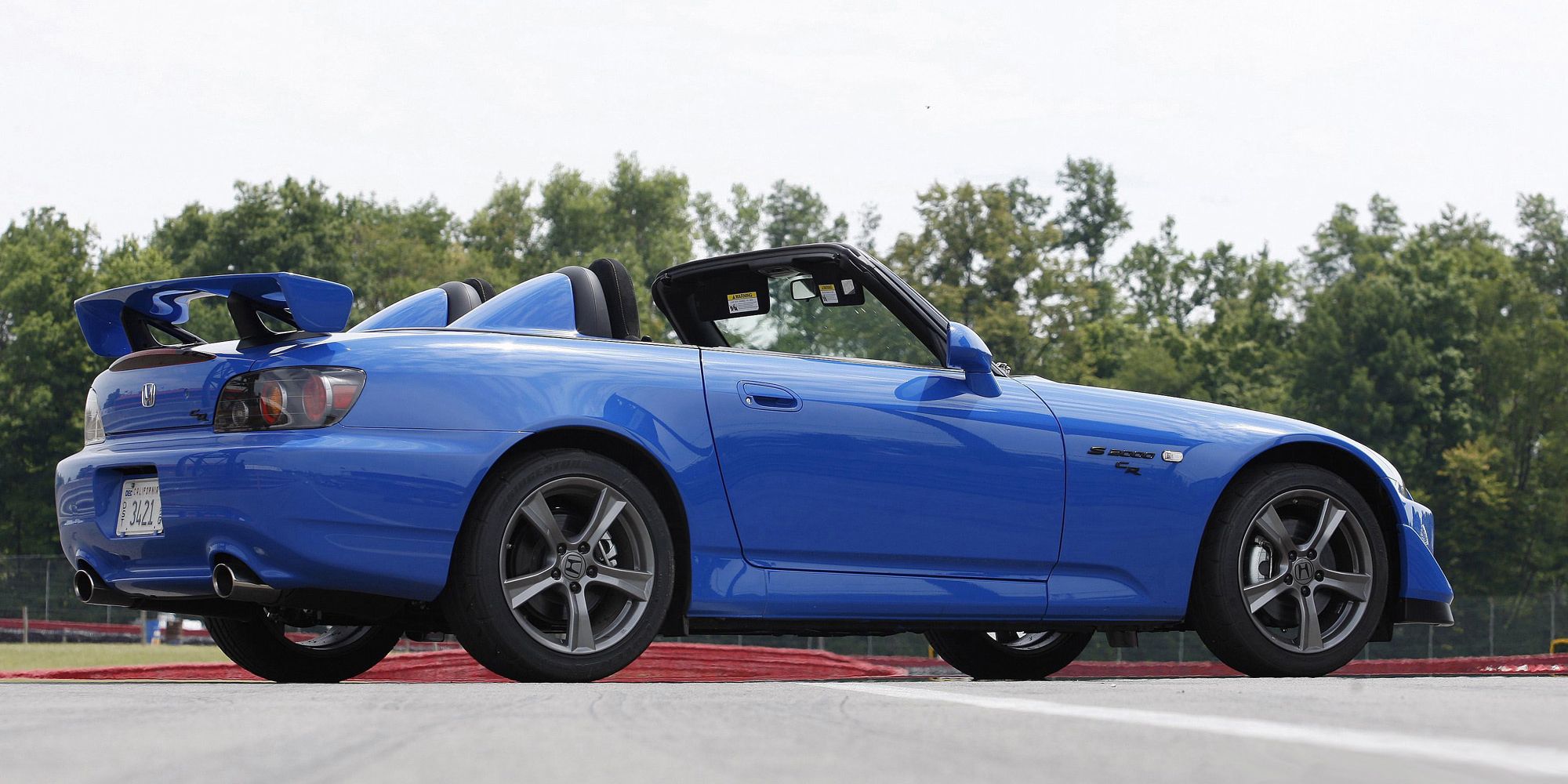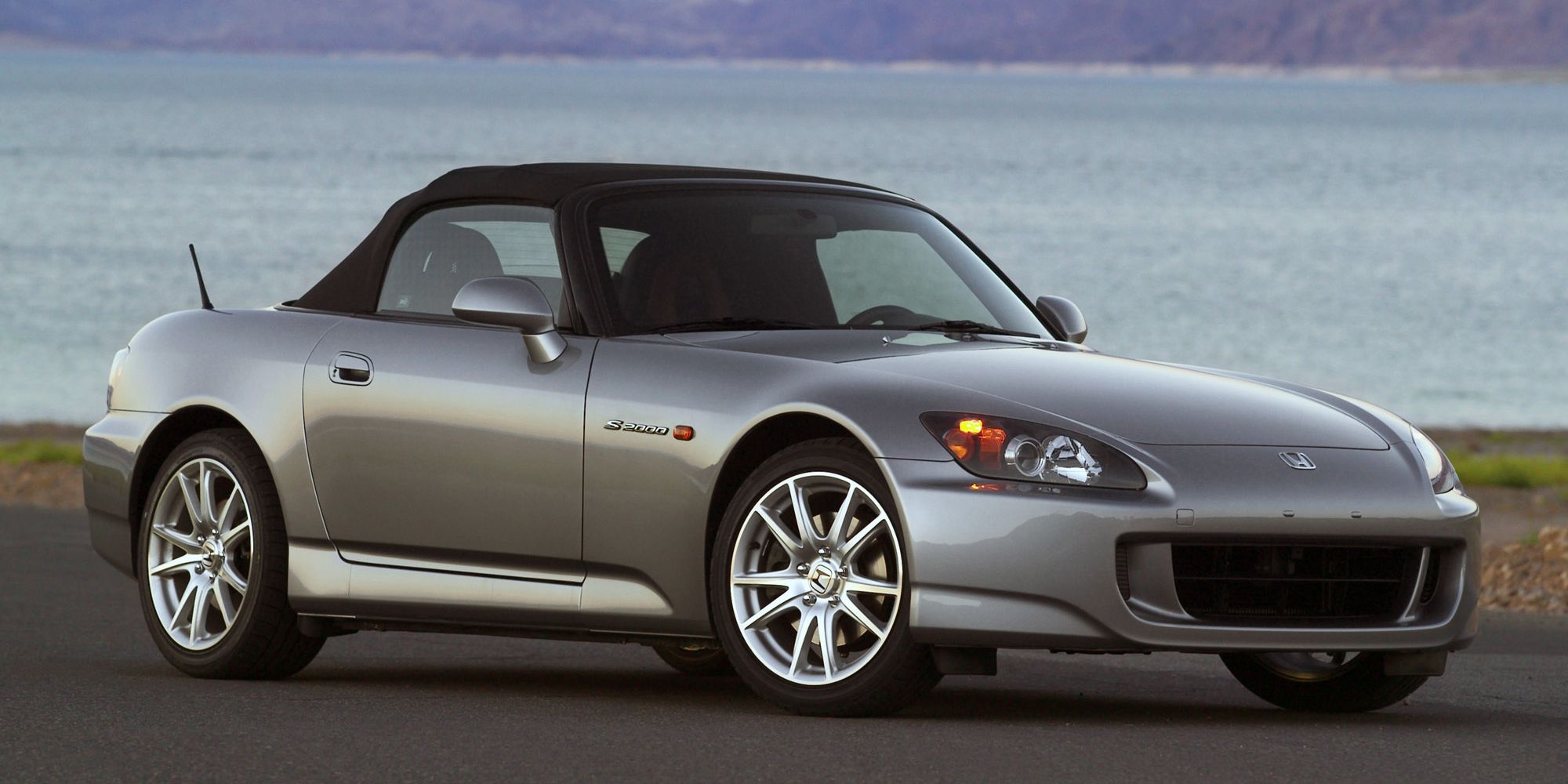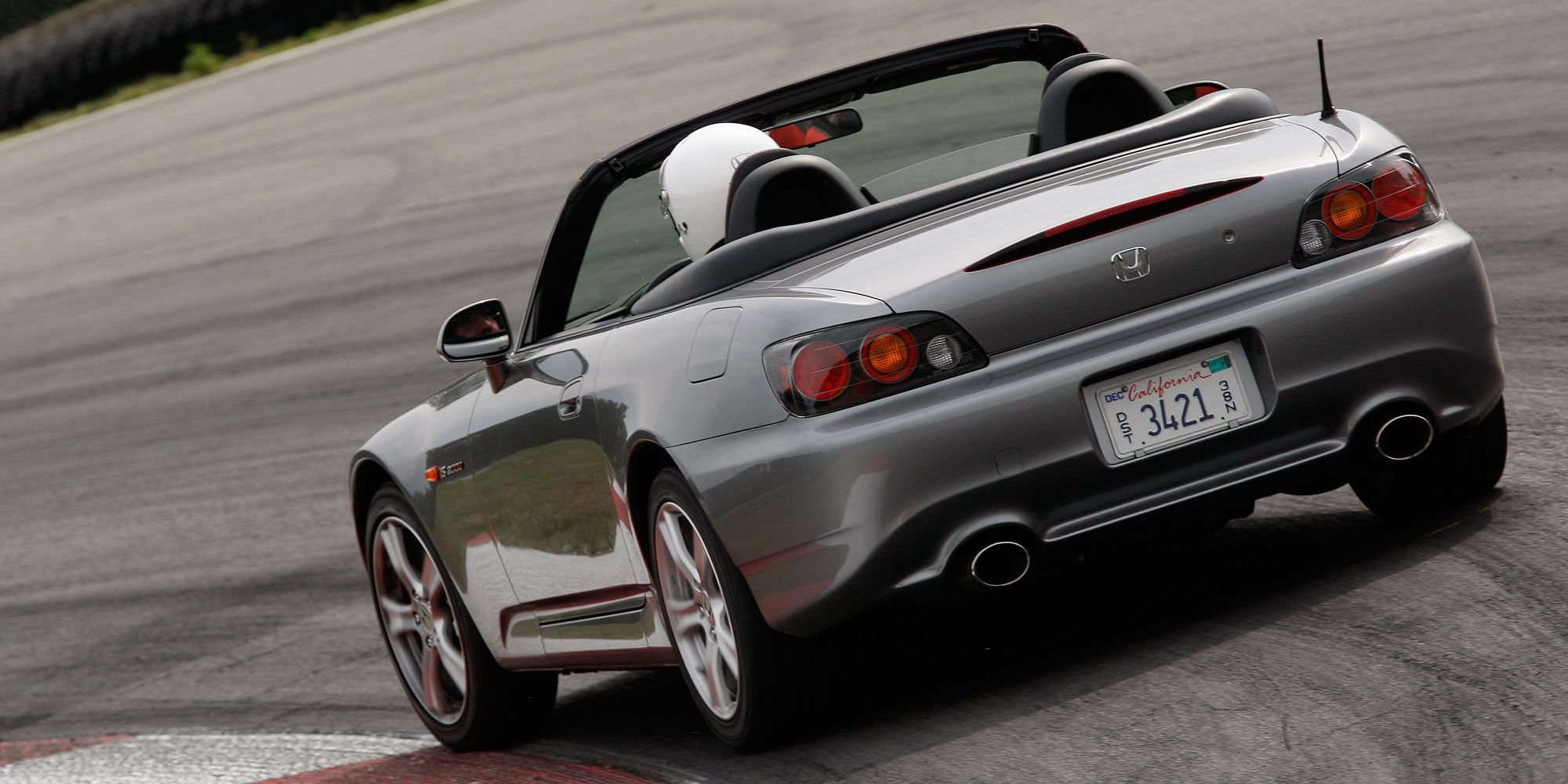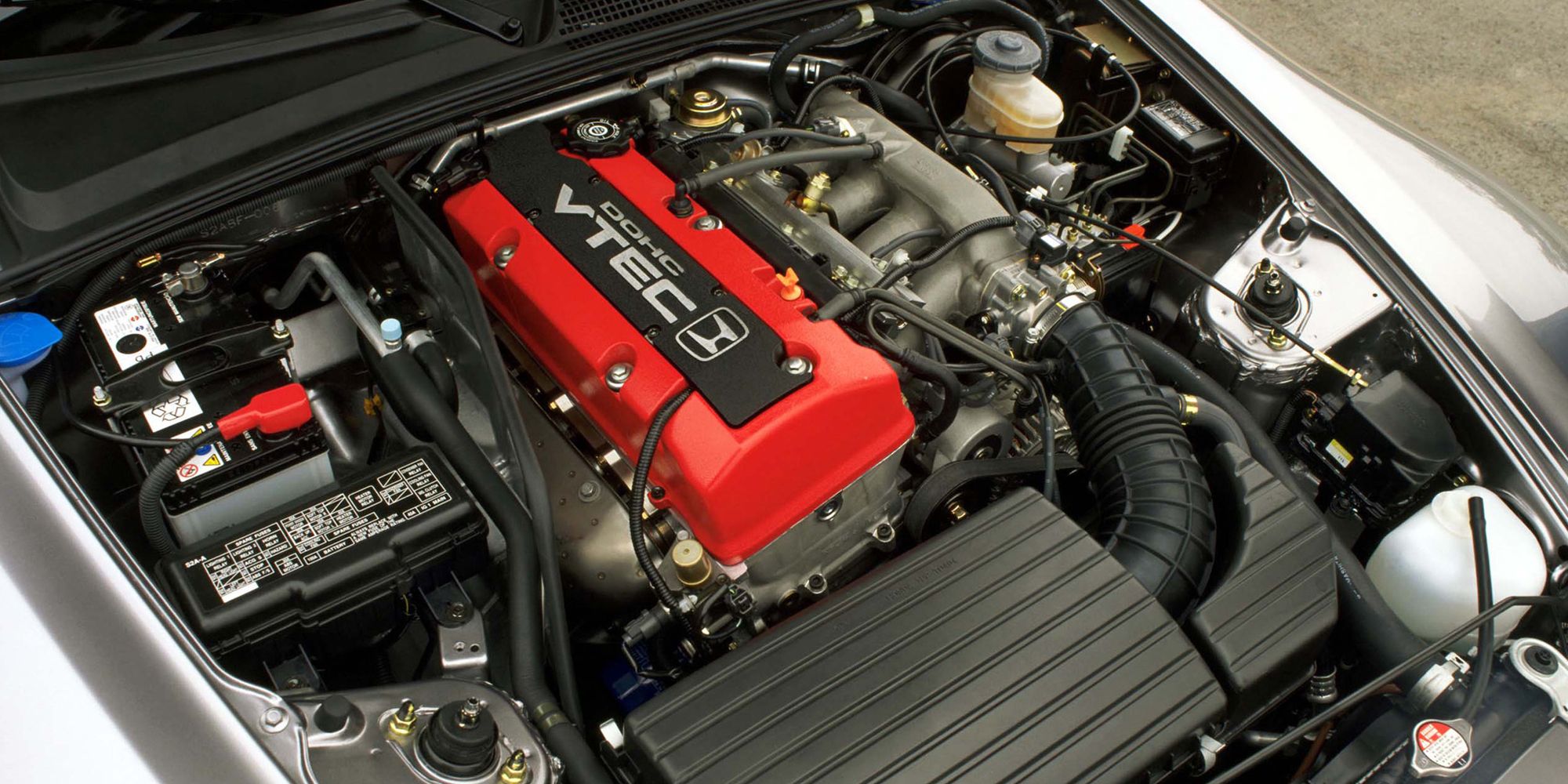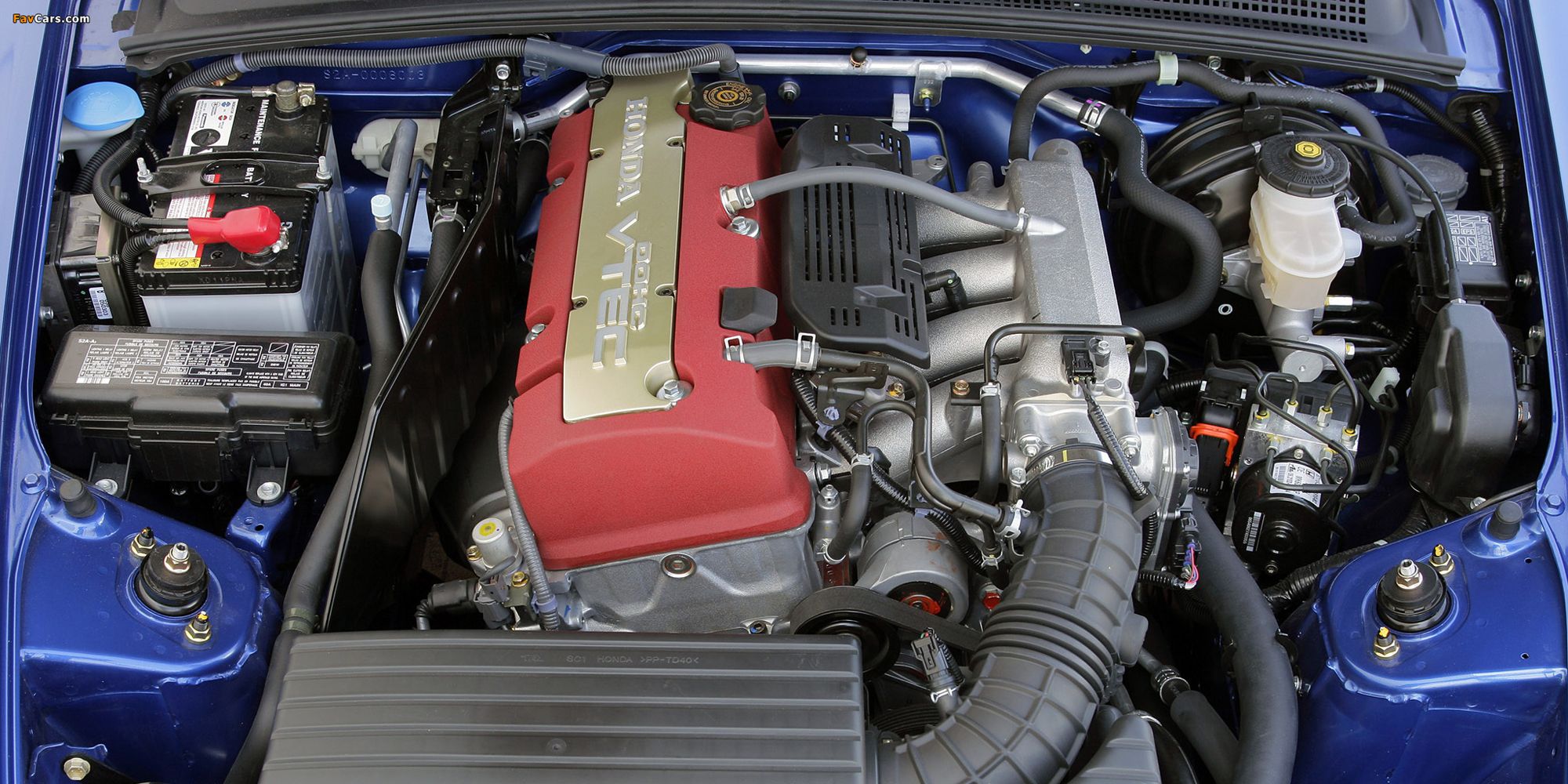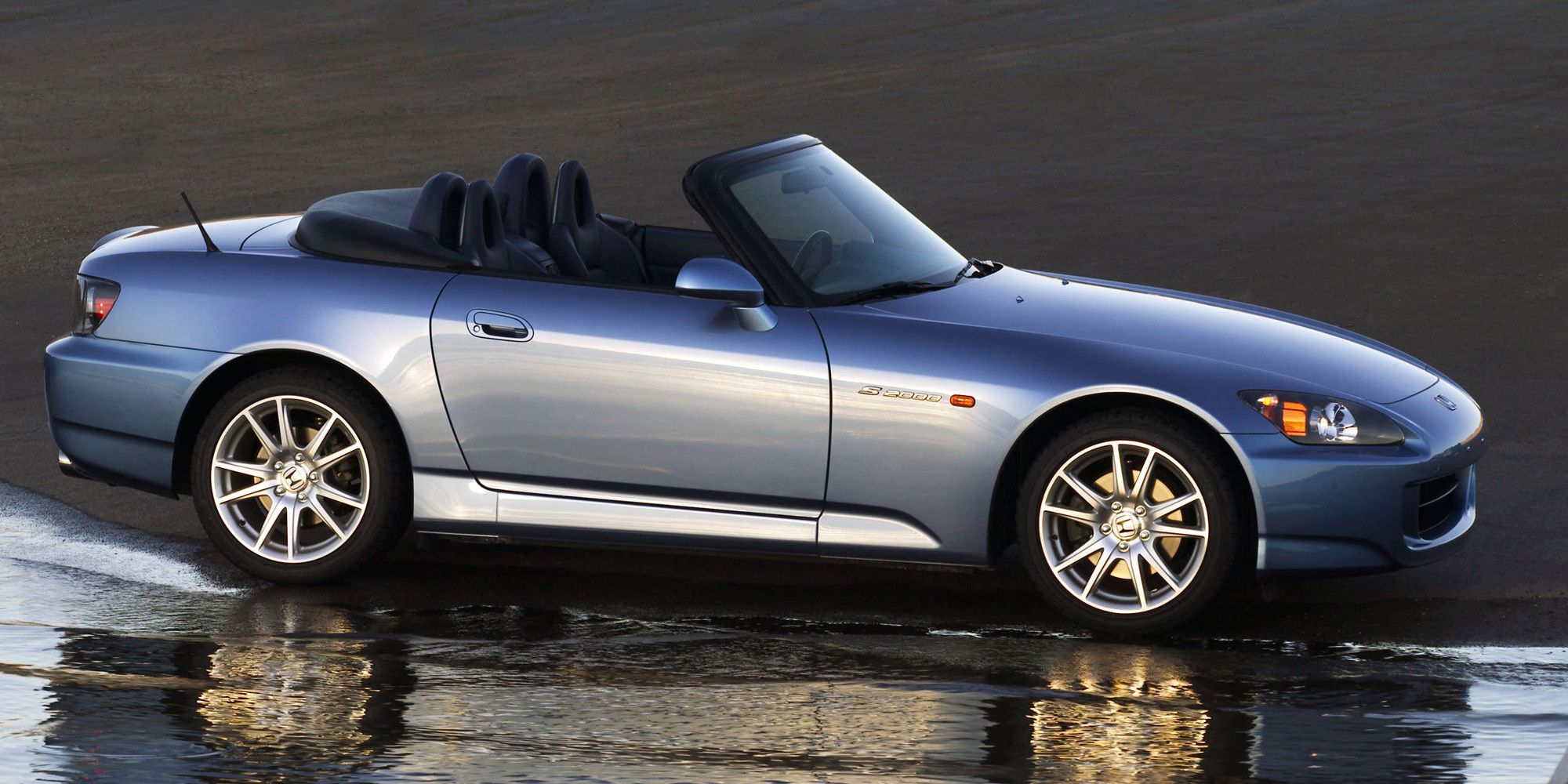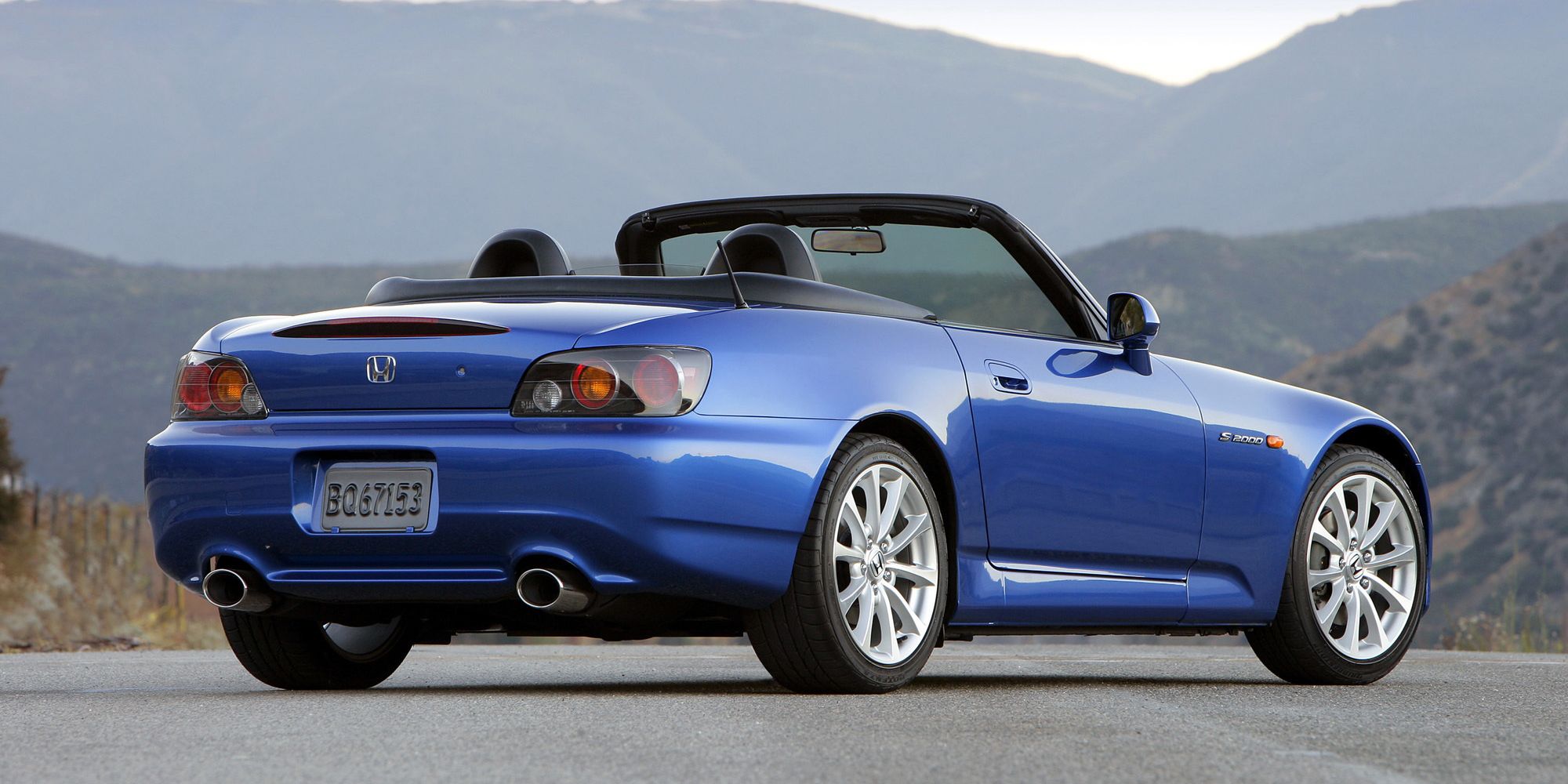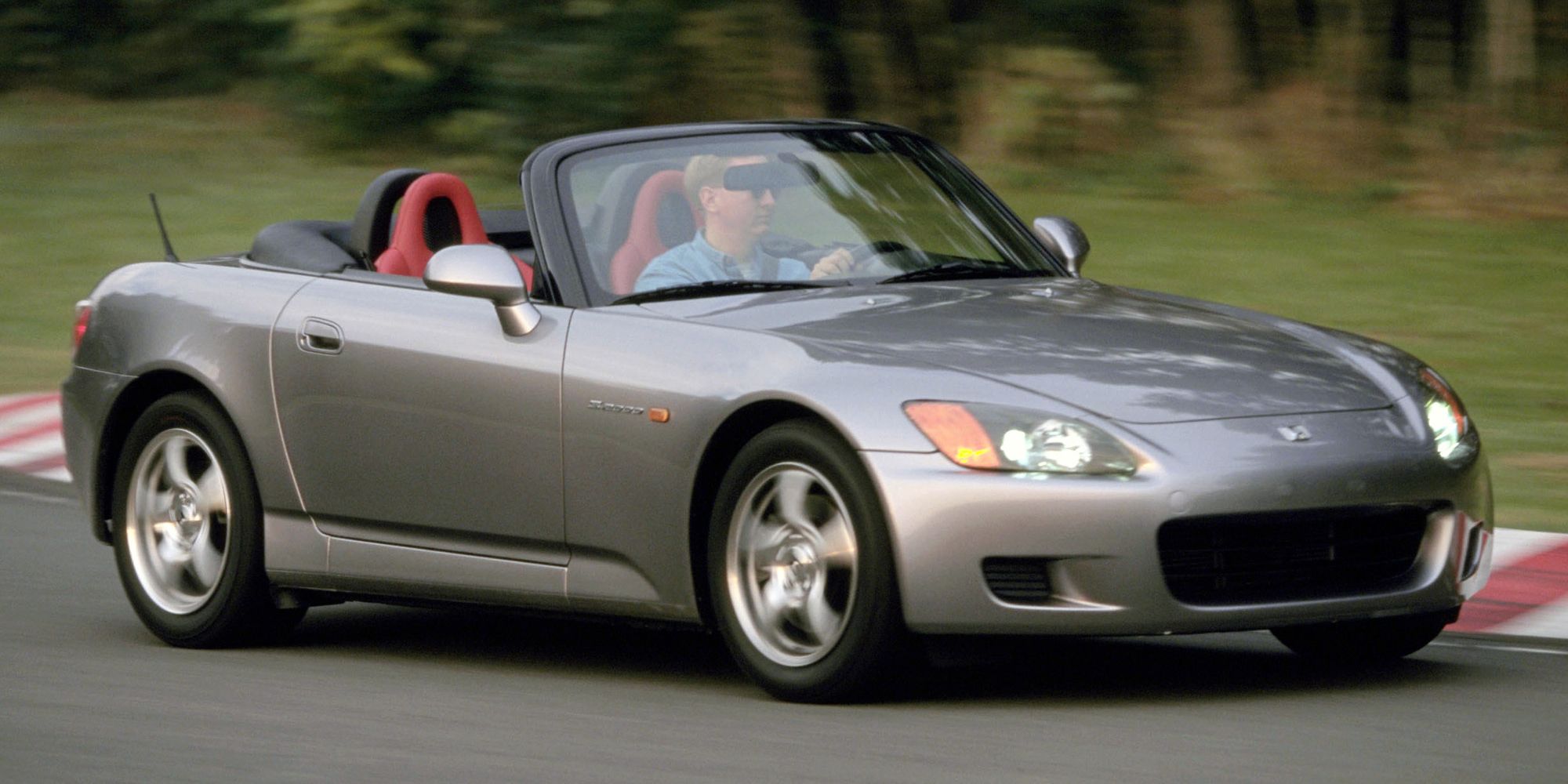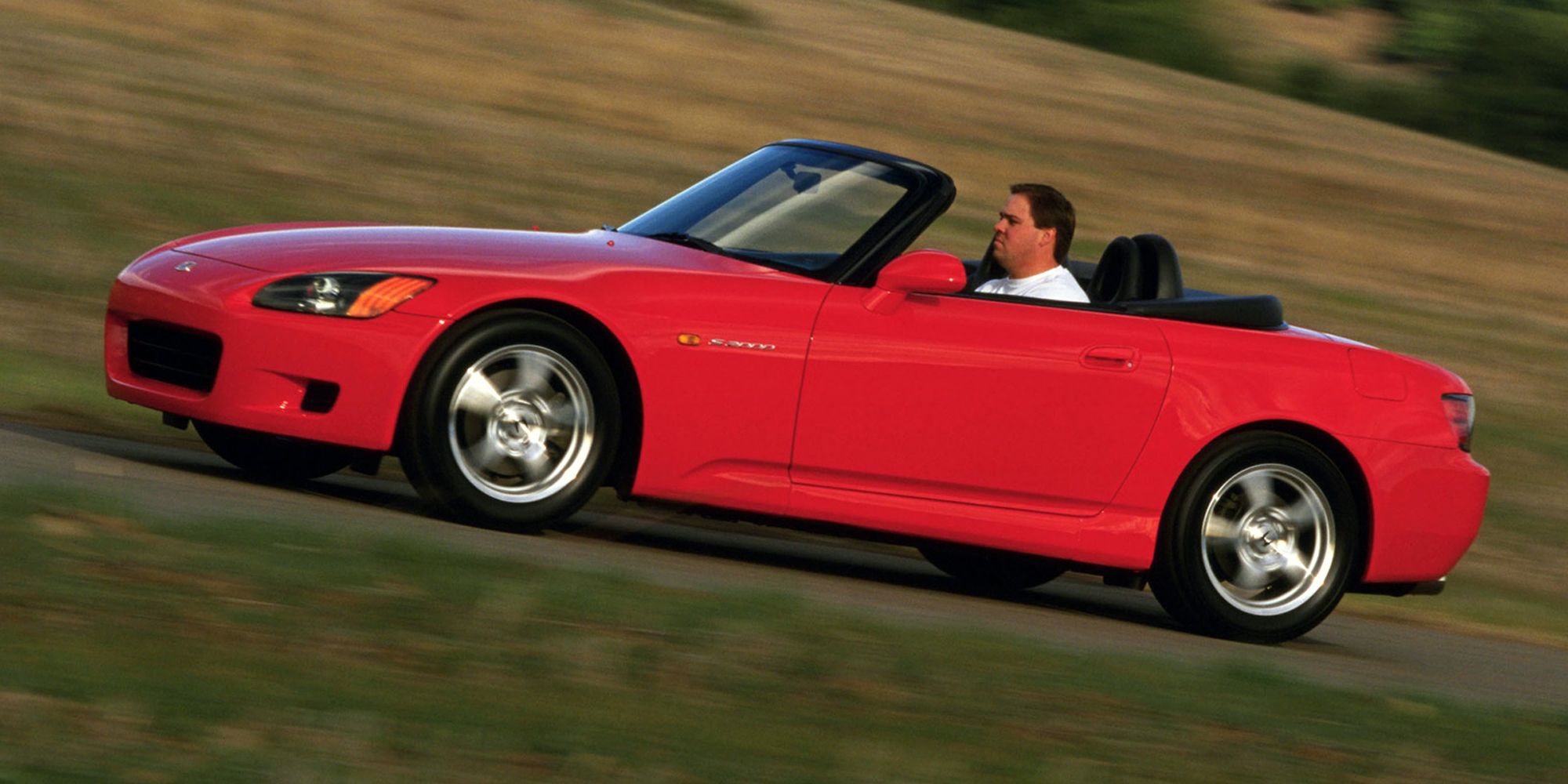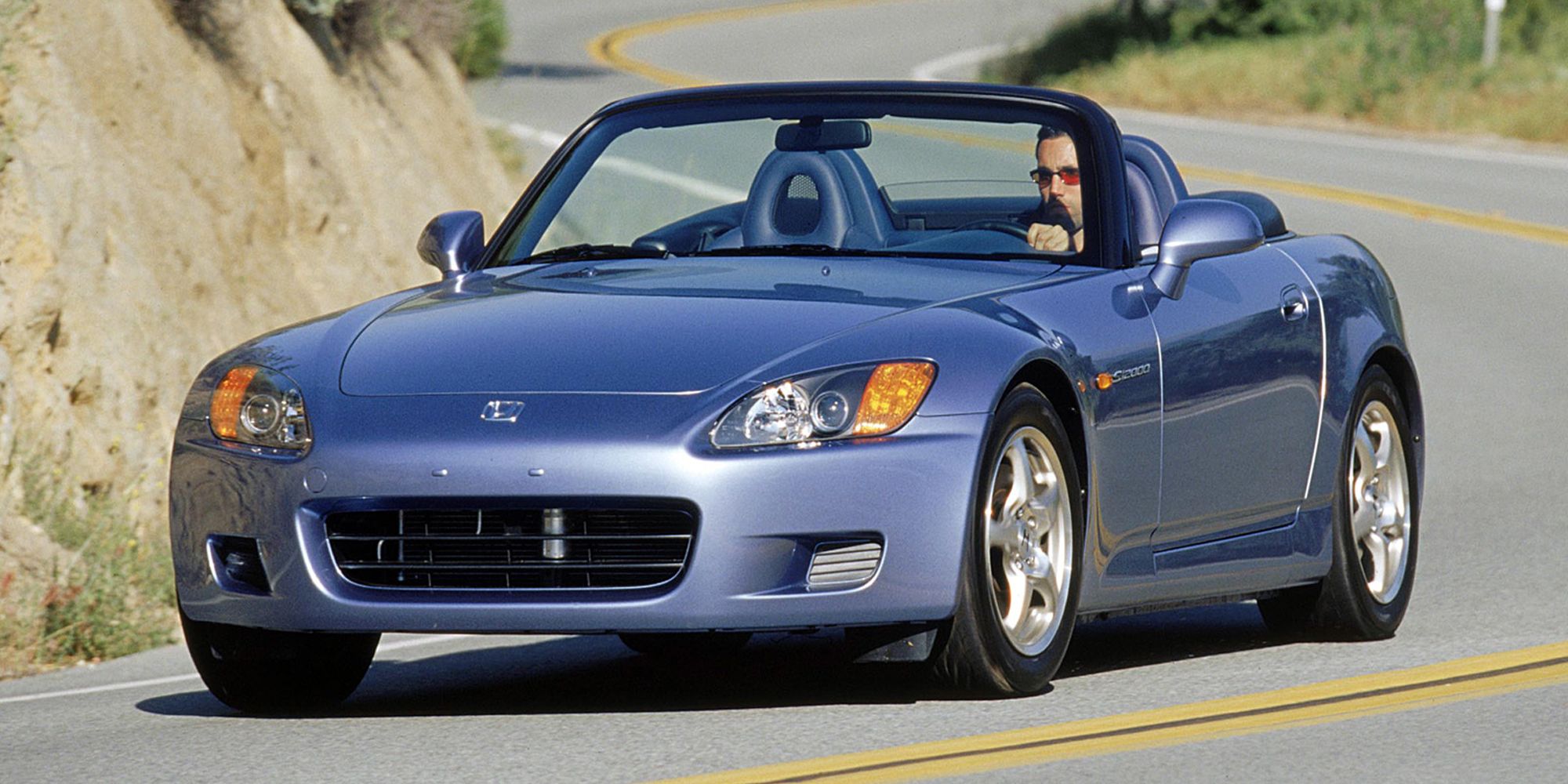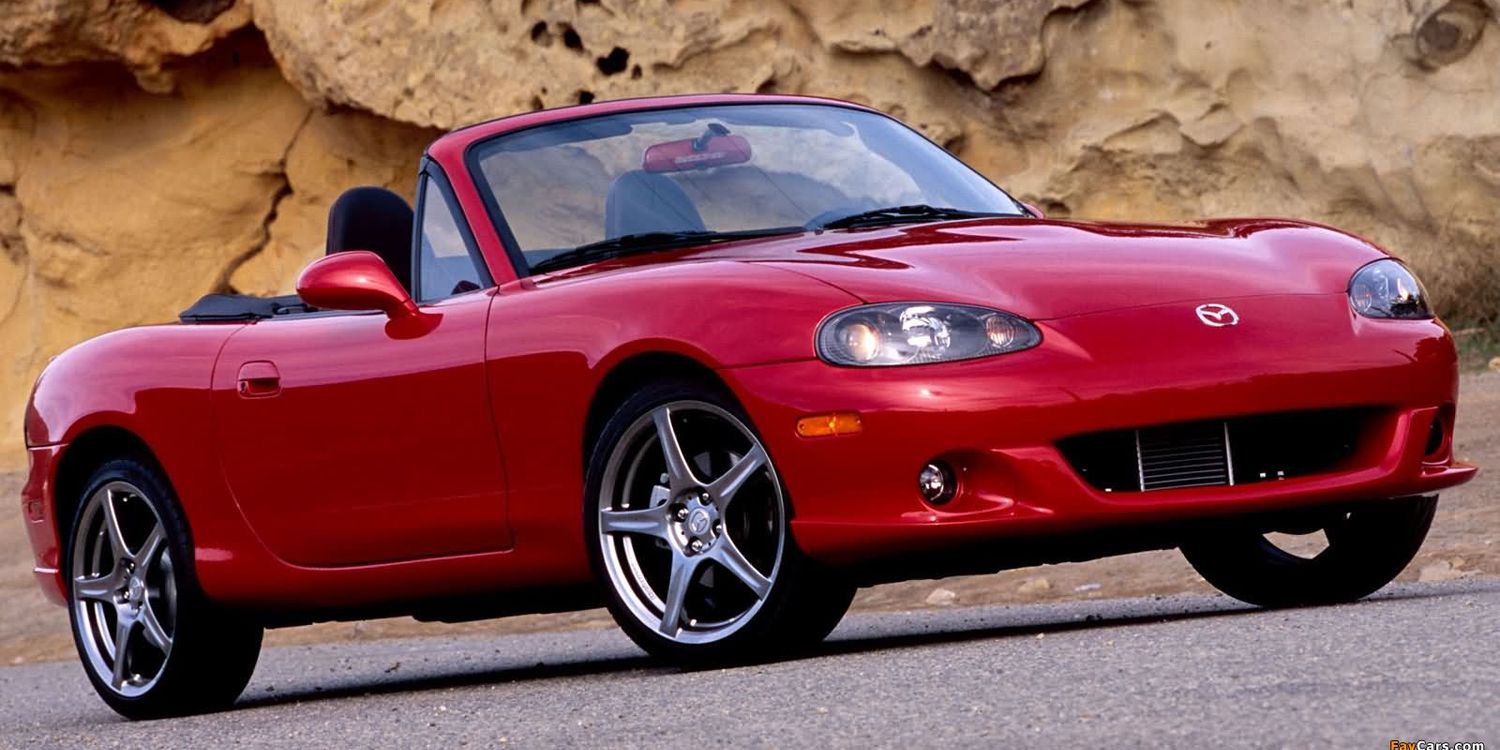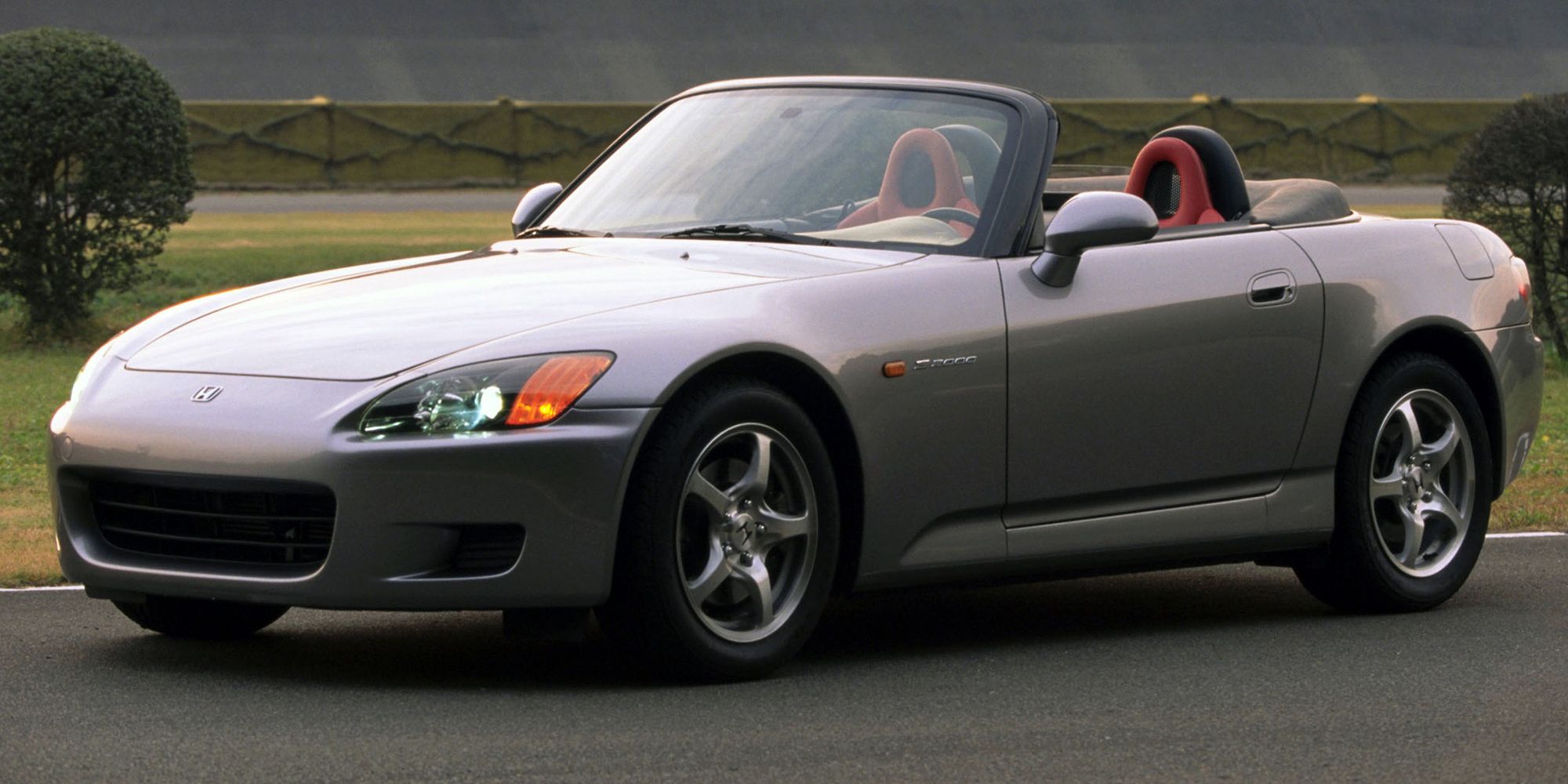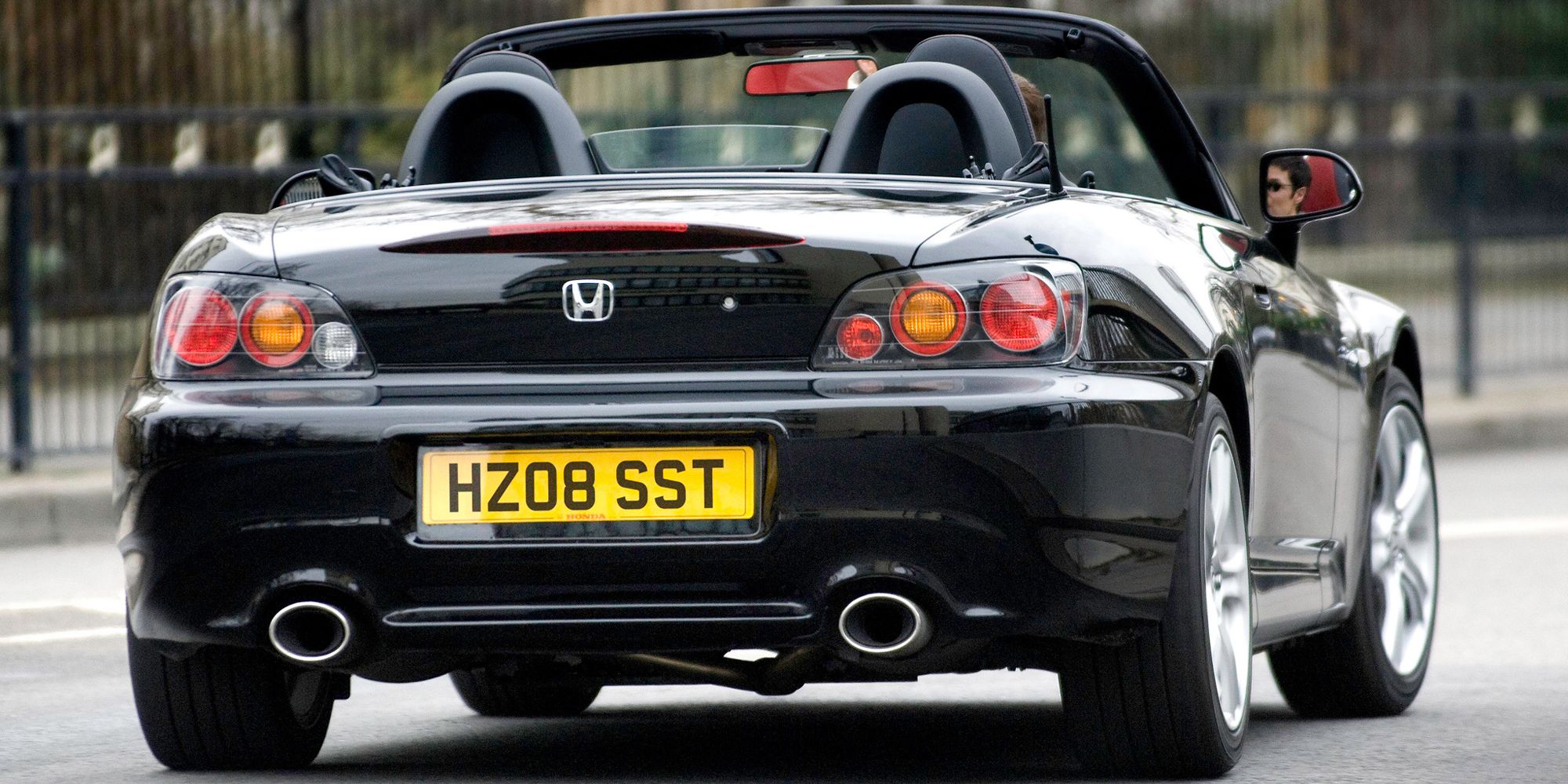Back in the 1960s, Japanese automaker Honda launched a car called the S800. It was designed as an answer to the abundance of British two-seater sports cars that were popular at the time, only the S800 was more advanced and a lot more reliable. It used independent rear suspension and could do 35 mpg while still being able to reach 100 mph. The S800 also very much fitted Honda's philosophy of small capacity, high-revving engines, as it could rev all the way to a screaming 10,000 RPM.
Decades later, and after a lot of deliberation, Honda finally decided to continue the S-Series lineage with the excellent S2000 in 1999. As the name implies, the S2000 upped the ante with a 2.0-liter engine, and much more modern styling. Even though the S2000 is an icon among two-seater sports cars, there are tons of cool facts about it that everyone seems to have forgotten.
9 Insanely High Specific Output
Specific output is a figure that people rarely talk about in cars. In plain English, specific output is how much horsepower the engine produces for every liter that it displaces. Usually, full-on race cars have very high specific outputs, but the Honda S2000 proved that even production cars can play that game.
The 2.0-liter naturally-aspirated four-cylinder developed 240 hp, giving it a figure of 120 hp per liter. This was the highest specific output of any production naturally aspirated engine back in 1999, and it would take another 10 years before Ferrari took the title with the 458. Even when it did, the 458 didn't edge out the S2000 by much.
8 The AP2 Was Calmer
The first iteration of the S2000 is referred to as the AP1, and it was sold from 1999 to 2003. The AP1 was the one that had the screaming 9,000 RPM redline and that developed its peak torque at 8,300 RPM. However, Honda knew that the tradeoff for the visceral driving experience was a lack of low-end torque. In 2004, this changed.
2004 saw the introduction of the slightly more restrained AP2 S2000. Some of the differences include revised styling and a slightly larger engine at 2.2 liters. Although it developed the same amount of power, the redline was dialed down to 8,000 RPM. It was still a joy to rev it out, but low-end torque was improved a good deal.
7 The Awesome CR Model
Towards the end of the S2000's life, Honda experimented with various special edition models. None of them are as sought after as the CR, though. The CR, or Club Racer, was designed exclusively for the United States market, and it remains the most expensive S2000 in the classifieds. That's if you actually find one.
While the engine remained unchanged, the S2000 CR was outfitted with stuff like a body kit, extra chassis bracing where the soft top would usually rest, stiffer suspension, a rear wing, and wider rear tires. It also included some truly meticulous and typically Honda stuff, like a slightly shorter shift knob to reduce the shift throw by a tiny 6%. All the little changes added up to make a big difference.
6 The Frame
There's one important element that the S2000 retained from the concept car that preceded it, and that's the frame. Honda's engineers developed something known as an "X-bone" frame, a unique design that aims to increase rigidity and collision safety.
The entire drivetrain of the S2000 was very well engineered and put together. Honda also moved as much of the car's mass to the center, achieving that perfect 50-50 weight distribution. As all other Hondas, double-wishbone suspension was standard fare.
5 The Engine Is Award-Winning
You can't talk about the Honda S2000 without talking about the incredible engine. The F20C, and later the F22C, was developed with a lot of influence from Honda's race cars. Obviously, VTEC was present for both camshafts, and of course, that amazing specific output figure.
The F20C in the AP1 S2000 produced 240 hp and 153 lb/ft of torque. 0-60 was done in 5.9 seconds, with a top speed of 149 mph. Power was sent to the rear via a 6-speed manual transmission, with no automatic to be seen anywhere. The AP2 bumped things up to 242 hp and 163 lb/ft of torque, though everything else remained the same. It deserves its title as one of the best four-cylinder engines ever made.
4 You Can't Operate The Roof While On The Move
This is a minor but still irksome thing about the S2000. Modern convertibles are very advanced, and almost all of them allow the driver to open or close the roof while on the move. Admittedly, it's at very low speeds, but it's still possible.
However, the S2000 hails from a different era; you have to be completely stationary for the roof to go anywhere. One slight blip of the throttle, and it stops dead in its tracks. There are workarounds, including the plethora of aftermarket hardtop solutions, but it's still something worth noting.
3 The High-Revving Four-Pot Almost Didn't Happen
As mentioned previously, the S2000 is famous for its powertrain. The 2.0-liter four-cylinder is among the all-time automotive engine greats. But, for a short while, the F-series four-pot almost didn't make it under the hood of this sports car.
The S2000 was preceded by a concept car called the Honda SSM. It looked very similar, but the body was much lower, and it looked even more exotic on the outside. Under the hood, meanwhile, was a naturally-aspirated five-cylinder engine that revved all the way to 8,000 RPM. While it's difficult to imagine, that would have definitely been an interesting combo.
2 It Technically Wasn't A Miata Competitor
Sometimes, it's very easy to compare the S2000 to that other famous Japanese roadster, the Miata. It's easy to see why that comparison often happens, but Honda never originally intended for the S2000 to compete with the Miata.
The Miata is way simpler and less powerful, and it has always been a simple RWD roadster. The S2000 was more sophisticated, and it always gunned for stuff like the Porsche Boxster and BMW Z4.
1 It Was Surprisingly Expensive When New
One thing that's easy to forget about the S2000 is that it was surprisingly expensive when it came out. Due to it being classed as a competitor to the BMW Z4 and Porsche Boxster, and due to all the sophisticated components it used, the S2000 was priced a little higher than you might think.
In its homeland of Japan, the S2000 started off at around $28,000 in 1999, which would translate to around $44,000 in 2021 money. For comparison, the base BMW Z4 sDrive30i starts at $49,700, whereas the Miata starts at $26,830 in 2021.

